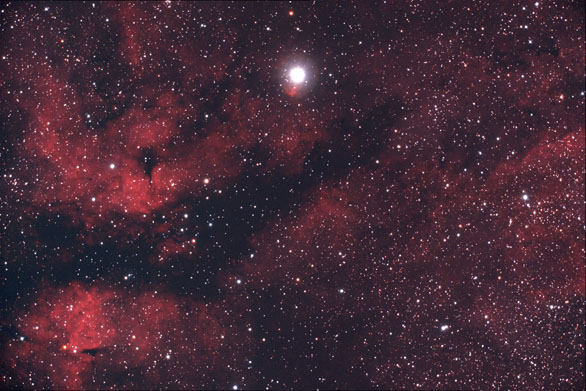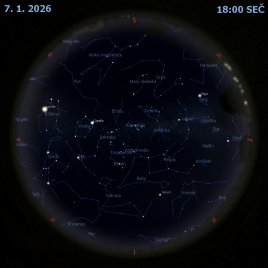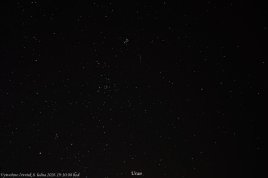Okolí Gamma Cygni

Uznání a copyright: David Kraft, 27let http://www.astronom.cz/deavi/
Popis: Podmínky: jasno, bezvětří, seeing 5/10, 2°C Ve středu Severního kříže, slavného asterismu v souhvězdí Labutě (Cygnus), se nachází. nadobr Gama Cygni. Tato jasná hvězda známá pod jménem Sadr se též nachází ve středu tohoto nádherného pole hvězd s komplexem hvězd, prachových mračen a zářící mlhovinou v rovině naší Mléčné dráhy. Tato emisní mlhovina v Labuti je vzdálená asi 2000 světelných let. Spolu se Sluncem leží v naší galaxii ve spirálním rameni Oriona. Toto je druhý pokud o vyfotografování této fotogenické oblasti v Labuťi, od spodního snímku foceného před půl rokem je vidět značný posun v kvalitě snímku a zpracováním. De facto se změnilo úplně všechno, ale největší vliv na kvalitě snímků má obloha, která je v dané lokalitě na louce u Čbánu (Úněšov) vcelku dobrá, a nedá se srovnat s oblohou 8 km od Přeštic, kde jsem původně fotografoval. V dalším posunu vidím i pořízení nového dalekohledu Zenithstar 110 APO.
- Technické údaje a postup:
Místo pořízení: Čbán
Datum pořízení: 19.5.2007 - 02:00 hod.
Optika: Montáž: EQ-6 Skyscan, Optika: WO ZenithStar 110 TMB Triplet APO F/stop: f/7 Filtr: Baader UV/IR filtr + Astronomic CLS filtr, Pointace: SW ED 80 + TVGuider Fotoaparát: Canon EOS 300D, modif. ATC-CL1
Zpracování: Surové snímky v RAW prevedeny do dng. a od kazdeho snimku byl odecten DARK a aplikovan Flat field, poté snímky zprumerovane v Registar. Vysledny snimek upraven v Photoshopu.
Postup: Délka expozic: 4x10 minut 800 ASA


